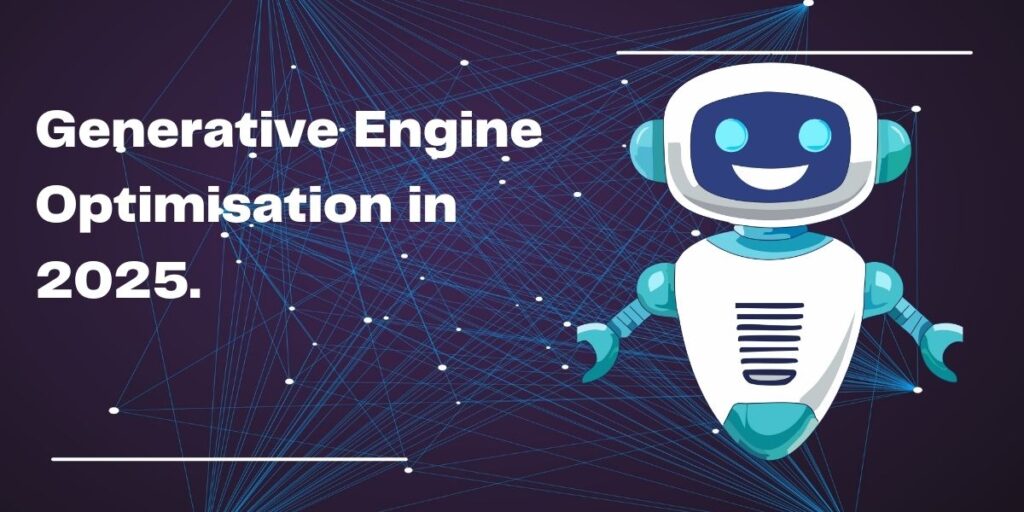optimizationIn the evolving landscape of digital search, how to use generative engine optimization in 2025 isn’t just a trendy topic — it’s fast becoming essential. Traditional SEO still plays a role, but the rise of generative AI search and conversational agents means brands must adapt. In this post, we’ll define what GEO is, explain What Is Generative Engine Optimisation (GEO) and Why It Matters, show how it differs from SEO, and map out a robust framework for how to use generative engine optimisation in 2025 effectively.
What Is Generative Engine Optimisation (GEO) — And Why Does It Matter?
“Generative Engine Optimisation” (GEO) is the practice of optimizing content and digital assets so that large language models (LLMs) and AI-powered search systems will surface or cite your content when generating responses to user queries.
Whereas classic SEO is about ranking pages in search engine result pages (SERPs), GEO is about being used by generative AI systems — being referenced, summarized, or integrated into AI responses.
This matters because as users increasingly turn to AI assistants (ChatGPT, Perplexity, Bing Chat, Google’s AI Overviews) rather than traditional search bars, the visibility you gain via GEO can drive traffic, brand recognition, and trust — even when users never click through to a site.
A landmark research paper formalized this idea: “GEO: Generative Engine Optimization” shows that applying targeted optimizations can increase content’s visibility in generative engine outputs by up to ~40%.
In short: how to use generative engine optimisation in 2025 means rethinking your content so that it not only ranks in search engines but also becomes a source AI systems implicitly “trust” and draw from.
GEO vs Traditional SEO — Similarities, Differences, and Overlaps
Before diving into tactics, let’s contrast GEO and SEO, and see how they complement one another.
| Aspect | Traditional SEO | GEO (Generative Engine Optimisation) |
| Objective | Rank in SERPs, get clicks | Appear in AI-generated answers, get citations or references |
| Focus | Keywords, backlinks, domain authority, technical SEO | Semantic depth, context, trust signals, structured content, citations |
| Format | Web pages, meta tags, link architecture | Modular, structured content, FAQ, schema, “knowledge fodder” |
| Metrics | Impressions, clicks, CTR, ranking | AI answer share, “cited by AI,” snippet inclusion, context usage |
| Overlap | Good content, clear structure, and relevance remain critical. | Builds on SEO fundamentals, but new layers added for generative systems. |
Indeed, GEO doesn’t overthrow SEO — it layers on top of it. Many traditional SEO best practices (quality content, internal linking, on-page structure) still apply. But in 2025, those who also master how to use generative engine optimisation gain a future-safe edge.
How Generative Engines Work: The Basics You Need in 2025
To use GEO well, you should understand how generative AI search systems typically work under the hood:
- Query & Retrieval
When a user inputs a query, the system retrieves relevant documents or passages via retrieval methods (similar to search) from a corpus of indexed web pages or sources.
- Synthesis
The LLM (large language model) synthesizes an answer by combining and summarizing those retrieved pieces, perhaps augmenting with external knowledge or context.
- Citation/Attribution
The engine may choose to cite one or more sources (web pages, research, authority pages) as the basis for its generated response.
- Delivery
The user receives a coherent answer, possibly with additional media (images, charts, links), not just a list of links.
Because generative engines rely on retrieving content first and then synthesizing, your aims with GEO include having web content that is retrievable, authoritative, clear, and contextually signal-rich enough to be selected for synthesis.
In effect, how to use generative engine optimization in 2025 demands that you think like an AI—not just like your human reader.
Key Strategies: How to Use Generative Engine Optimisation in 2025
Below is a roadmap you can implement today to prepare your content and site for generative AI visibility.
1. Topic Clustering & Pillar Content with Context Depth
Organize your content into topic clusters so that your site has a central “pillar” page and supporting subtopics. Use semantic linking (not just keyword linking), and cover each subtopic with depth. The better the coverage of a topic, the more likely generative engines can draw from you.
2. Use Structured Markup, Schema & Metadata
Adding schema (e.g. FAQ schema, Q&A, article schema, JSON-LD) helps AI systems parse your content more precisely. Structured metadata (titles, H1/H2 hierarchies) aids retrieval.
3. Modular, Answer-First Sections
Include short, clear “Answer to Query” or “Key Takeaway” blocks (1–2 sentences) early. Then expand. This makes snippets or AI citations easier.
4. Authority & Trust Signals
Cite credible external sources, include author bios, and link to research. If your site is already trusted (e.g. major publications, industry journals), your chance of being cited by generative engines improves.
5. Update & Refresh Frequently
AI engines prefer fresh, accurate information. Review your content periodically, add recent data or studies, correct outdated items. Doing so signals that your content remains relevant.
6. Promote Earned Media & External References
GEO research notes that external third-party citations (news sites, academic sources) help your content’s visibility with AI systems. Get featured, guest post, or be cited in trusted publications to build that ecosystem.
7. Monitor “Cited by AI” Metrics
Use tools or custom tracking to see when your content is referenced in generative answers. Track share in AI outputs (if provided) — treat this as a new visibility metric.
8. Adapt Per Engine
Different generative systems (Google’s AI Overviews, ChatGPT, Perplexity etc.) may have different biases and retrieval rules. Test prompts and queries to see how each engine surfaces answers in your niche and optimize accordingly.
9. Leverage Multimedia & Multimodal Content
In 2025, AI responses may include images, infographics, charts, or video. Use well-annotated visual content with alt text, captions, and structured data so AI can draw from those too.
10. Bridge to SEO — don’t abandon it
Continue strong domain authority building, backlinking, speed optimization, mobile experience, etc. GEO is additive, not replacing those fundamentals.
Example: Applying “How to Use Generative Engine Optimisation in 2025” to a Content Strategy
Let’s say your site is about digital marketing. You could:
- Build a pillar page titled “Generative Engine Optimisation (GEO): The Definitive Guide”
- Under that, subpages like “How generative AI search works,” “GEO vs SEO,” “GEO tactics for local business,” and “GEO monitoring and tools.”
- Within each subpage, begin with a precise, AI-friendly answer block (e.g., “Generative engines use retrieval and synthesis; to be used, we must be retrievable and authoritative”).
- Add schema markup (FAQ, Q&A) and structured tables.
- Get external citations by guest contributions on well-known marketing sites.
- Periodically refresh statistics and add new models or references (e.g., to new LLMs) in 2025.
In doing this, you are literally showing how to use generative engine optimization in 2025 via practice.
Challenges & Cautions in 2025
- Opaque engines: Much is still experimental — AI systems are black boxes. What worked last month may shift.
- Bias toward big brands: Large, authoritative domains may dominate AI citations, making it harder for smaller sites to break in.
- Content fatigue/duplication risk: Over-optimizing or repeating content can backfire with AI systems.
- Ethical issues: Be transparent; don’t mislead AI with over-optimized but shallow content.
Final Thoughts.
By now you know how to use generative engine optimization in 2025 isn’t just about manipulating AI—it’s about aligning your content with how AI systems reason, retrieve, and synthesize. The frontier lies in creating content that is reliable, well-structured, and deeply topical — so that when a generative system “thinks,” it picks you.

